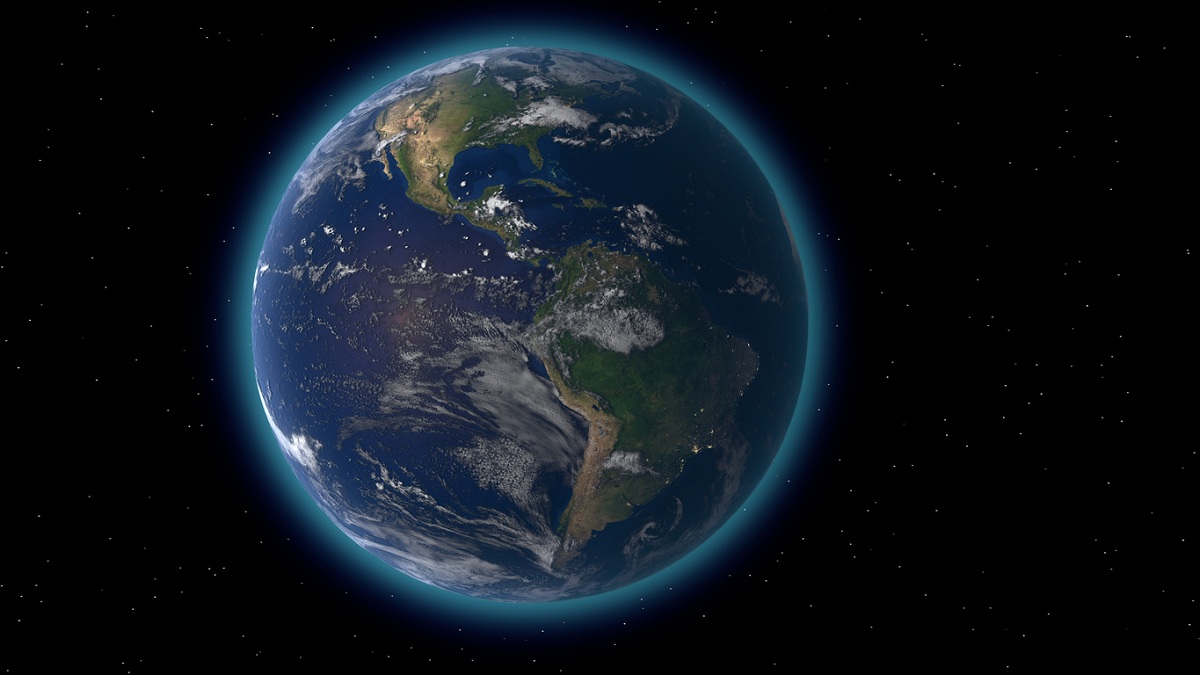
Our planet as we know it today is very different from what it looked like shortly after it was born. Planet Earth is estimated to be 4.470 billion years old. At that time it was just an agglomeration of rocks whose interior heated up and ended up melting the entire planet. With the passage of time, the bark dried until it became solid. In the lower parts it was possible to accumulate water while, above the earth's crust, layers of gases were formed that gave rise to the atmosphere. The earth history it is an interesting aspect that we must know.
Therefore, we are going to dedicate this article to tell you everything you need to know about the history of the Earth and the most important of it.
The origin of the planet
Our planet was nothing more than a group of conglomerate rocks that heated up inside and outside was creating a layer of gases that formed the atmosphere. It is to be known that the composition of the atmosphere has evolved over the years. It has not always been the same as we have it now. Water, earth and air began to interact violently until lava from the interior of the earth emanated in abundance through the multiple cracks that existed in the earth's crust. All this was enriched by transforming itself due to volcanic activity.
According to scientists and their studies, approximately 13.800 billion years ago there was a great explosion known as the Big Bang. The power released at an extremely fast speed, like the speed of light, pushed this extremely dense matter in all directions. Over time, as they moved further away from the center and slowed down, huge amounts of matter gathered and condensed in later galaxies.
We do not know what happened in the universe we are in the first 9 billion years; if there are other suns, other planets, empty space, or nothing at all. Around the middle of this period, or possibly earlier, a galaxy must have formed.
Formation of the Sun and planets

Near the edge of this galaxy, which we now call the Milky Way, about 5 billion years ago, some of the matter was concentrated in a denser cloud. This situation has happened in many places, but we are particularly interested in this one.
It is believed that a nearby star exploded and went supernova about 4.600 billion years ago. The shock wave produced by that explosion caused the material in our original solar nebula to begin to move. The cloud began to spin faster and flatten into a disk. Gravity gathers most of the mass into a central sphere, and around it smaller masses are rotating. The central mass becomes an incandescent sphere, a star, our sun.
These small masses also condense when orbiting the sun, forming planets and some moons. Between them, there is at least a fair distance and a suitable size to keep the water in a liquid state and retain an important gaseous envelope. Naturally, this planet is ours, the earth.
History of the earth

After the initial stage in which the earth turned into a hot substance, the outer layers began to solidify, but the heat from within melted them again. Eventually, the temperature dropped enough to form a stable crust.
At first, the earth had no atmosphere, which is why it was hit by meteorites. Volcanic activity is violent and a large amount of hot lava is expelled. As the crust cools and solidifies, the thickness of the crust gradually increases.
This volcano activity produces a large amount of gas, which eventually forms a layer on the earth's crust. Its composition is very different from the current one, but it is the first protective layer that allows liquid water to appear. Some authors refer to "Atmosphere I" as Earth's early atmosphere made up of hydrogen and helium, which contains some methane, ammonia, rare gases, and little or no oxygen.
In a volcanic eruption, oxygen and hydrogen produce water vapor, which condenses in the first rain when it rises into the atmosphere. Over time, as the earth's crust cools, the water in precipitation can remain liquid in the deepest part of the earth's crust, forming an ocean, the hydrosphere.
From here, paleontology deals with the study of geological history, and paleontology specializes in studying the biological history of the earth.
Geological history of the Earth
In the investigation to determine and understand the geological history of the earth, data and clues are obtained from four main types of rocks. Each type of rock is produced by different types of activities in the earth's crust:
- Erosion and transport enable subsequent deposition and produce continuous layers of sedimentary rock through compaction and lithification.
- Lava is discharged from the deep magma chamber and cools at the surface of the earth's crust to form volcanic rock.
- The geological structure formed in the existing rocks, which have suffered various deformations.
- The plutonic or magmatic activities that are generated inside the earth and they have an impact abroad.
The division of geological time scales in the history of the earth is based primarily on changes in fossil forms and other materials found in continuous strata. However, the first 447 to 540 million years of the earth's crust are recorded in rocks that contain almost no fossils, that is, Only suitable fossils exist from the last 540 million years.
For this reason, scientists divide the vast geological history of the earth into two main time periods: the Precambrian, which includes the Subzoic, Paleophonic, and Proterozoic, and the Phanerozoic, which is the fossil age of that period and reaches to the actuality.
The discovery of radioactivity allowed XNUMXth century geologists and paleontologists to devise new dating methods that could assign absolute ages (in millions of years) to the time scale.
I hope that with this information you can learn more about the history of the Earth and its characteristics.
